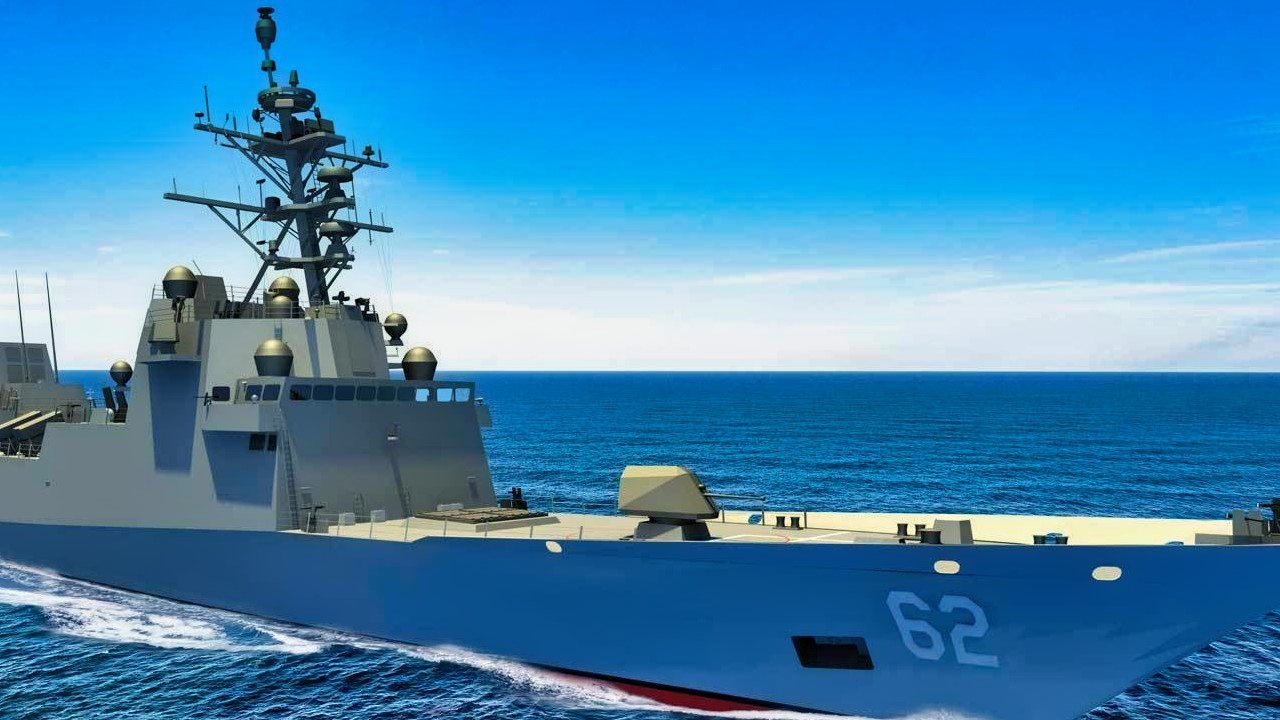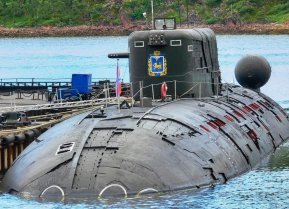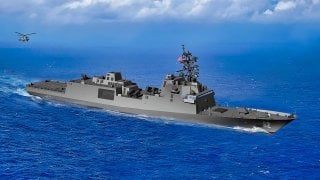The U.S. Navy's New Constellation-Class Are Packed with Firepower
Although the Constellation-class follows the Navy’s Littoral Combat Ships, the introduction of the new frigates appears to be an attempt to rectify the LCS shortcomings.
U.S. Navy Constellation-Class, Explained - The lead ship of the U.S. Navy’s Constellation-class will be delivered one year later than planned.
According to USNI News, workforce shortfalls where the frigate is being constructed has led to this timeline change.
The upcoming class of guided-missile frigates follows the littoral combat ships of the Freedom and Independence-classes.
The highly controversial LCS classes have been marred by mechanical and engineering issues since their introduction to service.
Hopefully, the introduction of the Constellation ships will be a much smoother process.
The Navy is planning to construct four Constellation class ships, the USS Constellation, USS Congress, USS Chesapeake and USS Lafayette. These vessels will possess multi-mission capabilities in order to conduct air warfare, surface warfare, electronic warfare, anti-submarine warfare and information operations.
The service first announced this new frigate project back in 2017 and secured the first FFG 62 in FY2020.
Introducing the Constellation-class frigates:
The Constellation class was derived from the Navy’s desire to procure a new frigate that could keep up with its more advanced aircraft carriers.
In 2018, six shipbuilders submitted design proposals to be considered by the Navy. Five of these manufacturers, Fincantieri Marine Group, Austal USA, General Dynamics, Lockheed Martin and Huntington Ingalls Industry, were awarded $15 million contracts to develop prototypes for the new frigate.
By 2020, the service revealed that Fincantierei Marinette Marine was selected as the winner with a modified design based on the FREMM- a vessel in service with both the Italian and French Navies. However, the American variant will feature capabilities better suited for the U.S. Navy’s needs.
Some of the modifications that will be incorporated include a unique propeller design for a low acoustic signature, a modified bow design and increased electricity generation.
Specs & capabilities:
According to the Congressional Research Service, “The Navy has chosen to elongate and widen the hull of its next-generation Constellation-class frigate relative to the [FREMM] parent design, but the officer overseeing its production says the internal layout will largely remain the same.”
The new frigates will be equipped with an Enterprise Air Surveillance Radar (EASR), Baseline Ten AEGIS Combat System, Mk 110 57mm Gun Weapon System (GWS), a MK 41 Vertical Launch System, among other capabilities.
Recently, the service implemented its first combat systems software package for the FFG 62 Constellation-class lead ship. A variant of the Aegis Weapon System Baseline 1-, the software has been modified to better suit the needs of the upcoming Frigate-class. With these assets, the Constellation-class ships will represent the U.S. Navy’s most formidable anti-submarine weapons.

Although the Constellation-class follows the Navy’s Littoral Combat Ships, the introduction of the new frigates appears to be an attempt to rectify the LCS shortcomings.
As detailed by Naval Technology, “At between $500-600m per ship, the Constellation class is around 50% more expensive per ship than the LCS, although as a much larger warship (7,200t fully loaded) than the LCS Independence variant (3,400t full loaded) and Freedom variant (~3,500t), it necessarily has greater capability, and crucially, survivability.”
About the Author
Maya Carlin, National Security Writer with The National Interest, is an analyst with the Center for Security Policy and a former Anna Sobol Levy Fellow at IDC Herzliya in Israel. She has by-lines in many publications, including The National Interest, Jerusalem Post, and Times of Israel. You can follow her on Twitter: @MayaCarlin.
Image Credit: Creative Commons.


